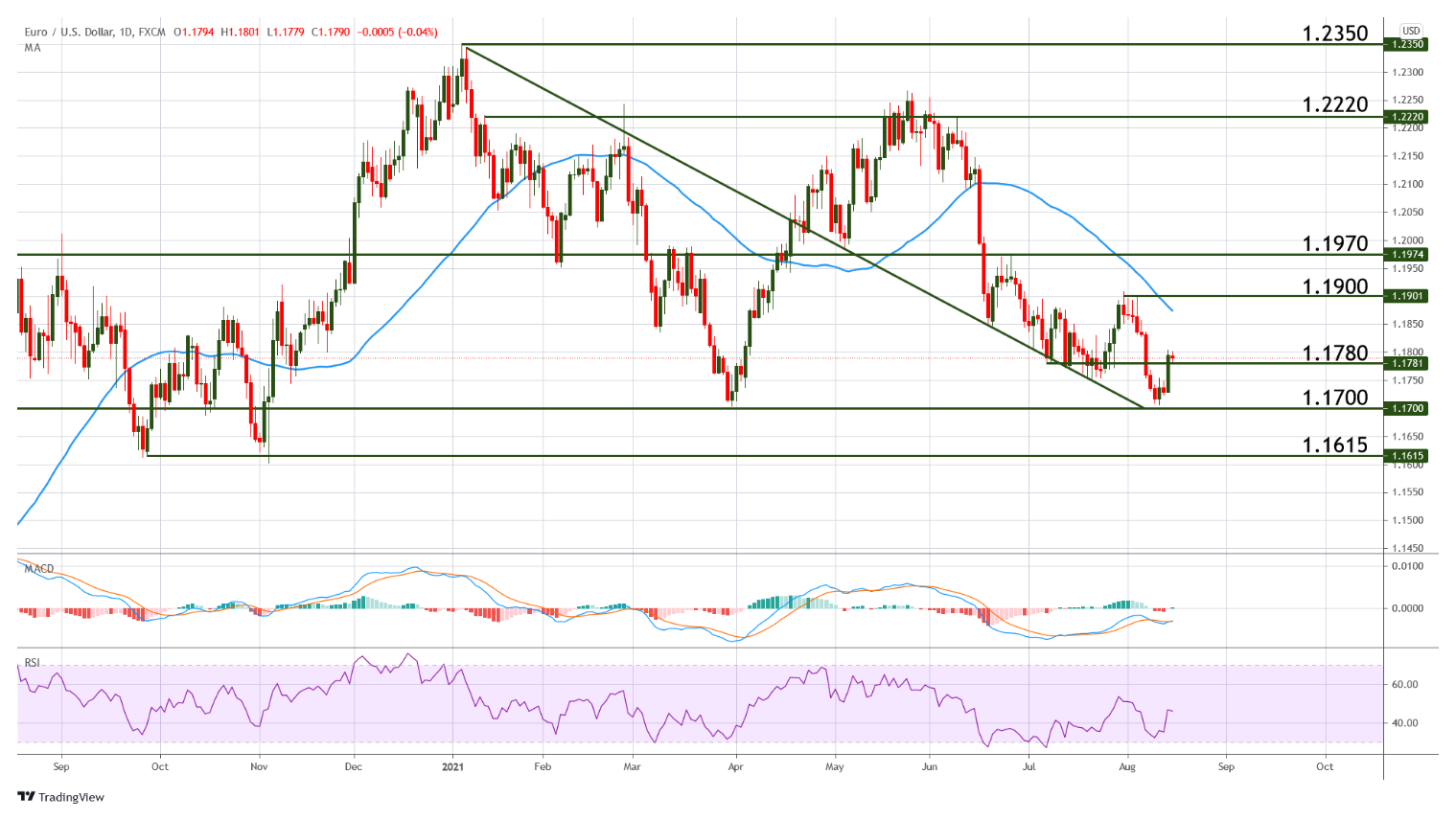US Dollar Burdened by Weak Consumer Confidence
Retail Sales and Fed Minutes Eyed
by Bogdan Giulvezan
The greenback is hovering near a one-week low against most of its major peers, following a disappointing Consumer Confidence report released last Friday by the University of Michigan. The report posted a reading of 70.2 (the forecast was 81.2), which is the lowest since 2011. Many analysts attribute this low confidence level to the fast-spreading of the new Delta variant of the COVID-19 virus.
Lately, it looks like all data has some interest rate implications and the poor consumer confidence report hurt bets for an early tapering of asset purchases, which in turn weakened the US Dollar. Adding to all of this was a worse than expected Core Consumer Price Index, which showed a 0.3% change, while the previous was 0.9% and the forecast was 0.4%.
The Dollar is trading just above 1.1780 against the Euro but the week is sprinkled with key events, which may lead to increased volatility and possibly another attempt to break support.
Key Events for the Week Ahead
The first releases with a high impact on the US Dollar are scheduled for Tuesday at 12:30 pm GMT: the U.S. Retail Sales and the Core version of the same indicator, which excludes automobiles from the calculation. More often than not, the release of the Retail Sales triggers strong moves on the US Dollar pairs, so this is one to keep an eye on. The Retail Sales report is expected to show a change of -0.2%, and the Core version a 0.2% change; usually, numbers above expectations strengthen the greenback.
The same day, at 5:30 pm GMT, Fed Chair Powell will speak at an online town hall event. Audience questions are expected and this usually increases volatility.
Wednesday at 6:00 pm GMT, the Fed will release the Minutes of their latest meeting, which contain in-depth insights into the reasons that determined the latest interest rate vote. More importantly, the document may contain clues about the next rate hike.
Technical Outlook – EUR/USD
After a near-touch of 1.1700 support, a weak dollar allowed the pair to climb above the previous S/R level located at 1.1780. Despite this recent bullish move, the overall bias remains bearish as long as price stays below the 50 days Moving Average and below the previous peak (1.1900).
The pair’s next move will be largely influenced by the Retail Sales data that comes out Tuesday and by Wednesday’s FOMC Meeting Minutes but strictly from a technical standpoint, it’s likely to see another move towards the support at 1.1700.
